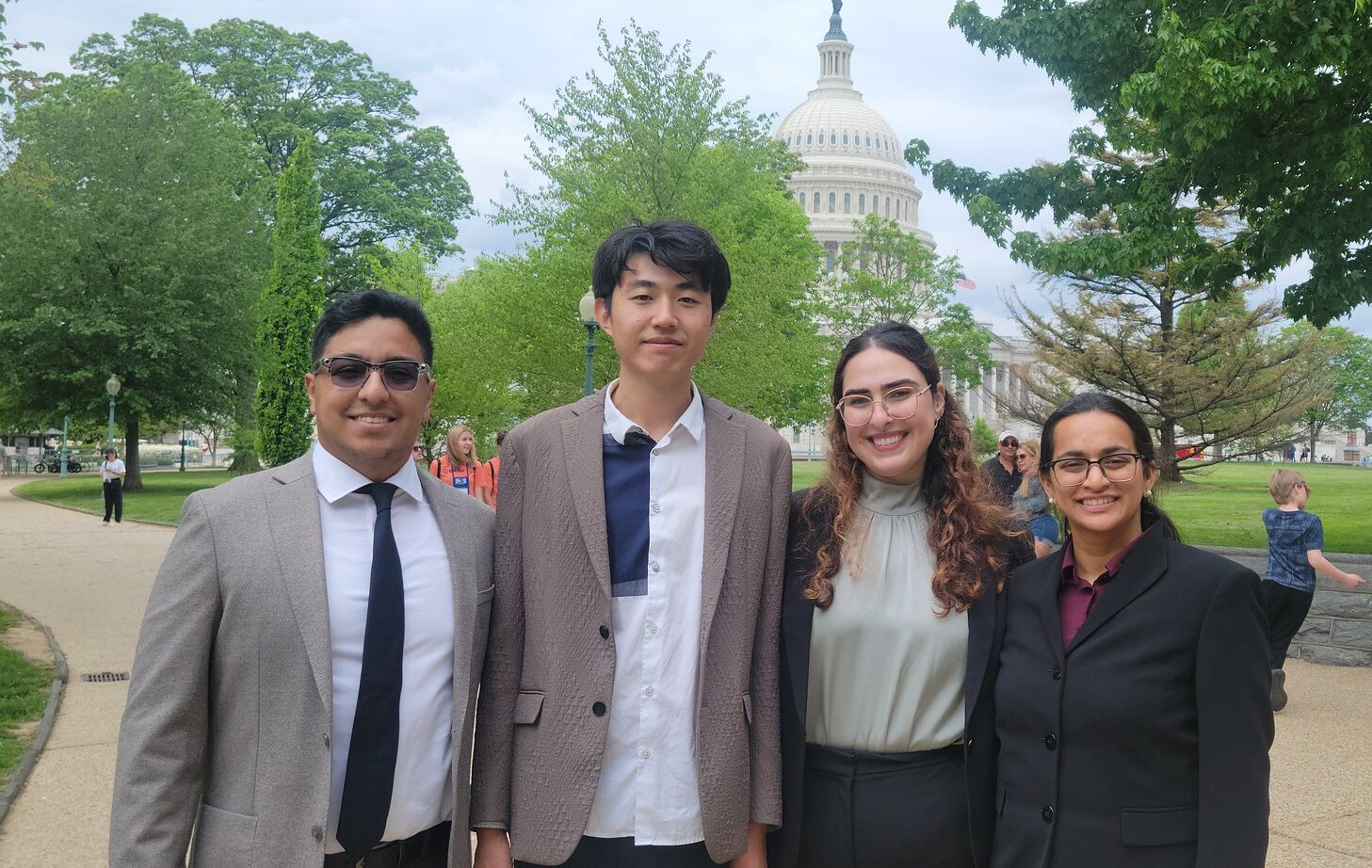Four students from the USC Price School of Public Policy analyzed a large dataset on private-sector pensions, providing Congress with new insights into how Americans plan for retirement. Their findings are expected to help Congress track nationwide trends on private-sector pensions, which could help lawmakers create and evaluate policies to boost access to retirement funds or improve financial health of pension plans, among other goals
The Master of Public Policy (MPP) students – Drishti Baid, Caroline Ghanbary, Gerson Montes and Weihang Zhang – analyzed little-known federal data covering hundreds of thousands of U.S. retirement plans for their practicum project, in which students tackle real-life policy challenges to complete their degrees. Their findings won them the John Randolph and Dora Haynes Foundation Recognition Award for Outstanding Performance in the MPP Practicum – the USC Price School’s top honor for practicum projects.
The student team worked with the Congressional Research Service (CRS) – the nonpartisan research branch of Congress – to compile, clean and analyze data from Form 5500s, annual reports filed by private-sector employers to the federal government. The project gave students an unusual task: Instead of researching policy questions assigned to them, they first had to figure out which questions the data could even answer.
“For this project, the real challenge for the first few months was finding questions that were truly useful for Congress, that could be done in this time span, and could be done with our analytical skills,” Baid said. “So, in some sense, the rubber met the road.”
Their findings quantified four emerging trends in private-sector pensions:
1. The Rise of Automatic Enrollment (AE). Students noted a significant increase in AE plans, in which workers are automatically opted into an employer’s retirement plan. From 2010 to 2022, the number of AE plans grew from 21,065 (3% of all plans) to 151,648 (18.92%).
- Such plans use behavioral science to boost workers’ participation and, in turn, retirement savings, Zhang said. “Young people might not be worried about retirement, or some people may be too lazy to choose plans or investment options,” Zhang said. “Automatic enrollment solves this problem.”
2. Increase in Inactive Participants. The team identified a rise in inactive participants – workers who leave the company but still have assets in the former employer’s plan. Most notably, there was a higher percentage (26%) of inactive participants in larger plans with at least 1,000 workers.
- “There are economies of scale within larger plans, so larger plans have the advantage of having lower investment fees,” Montes said. “That could potentially be one reason why there are more inactive participants in larger plans: because it’s cheaper compared to having their assets in smaller plans.”
3. Emergence of Cash Balance Plans. An increasingly popular pension offering is a cash balance plan, which gives retired workers access to the entire sum of their balance, instead of receiving benefits monthly. Cash balance plans made up just 16% of defined benefit plans in 2010, compared to 56% in 2022.
- “There has been some reporting on cash balance plans becoming a potential for tax shelters, so it’s really important for Congress to take a look into these plans to see if there is that potential for high earners to shelter more money in a tax-deferred account,” Ghanbary said. “However, it’s not yet showing in the data. It’s just a hypothesis, but something to keep in mind.”
4. Insolvency of Multiemployer Plans. The American Rescue Plan Act of 2021 authorized a Special Financial Assistance (SFA) program targeted at multiemployer plans at risk of insolvency. The team found that the plans that received SFA so far, amounting to over $71 billion in total, had deteriorating financial health during the 10 years before receiving financial assistance.
- “The government is spending a lot of money on this, so from that perspective alone this is an important issue,” Baid said. “It’s useful to know that, looking forward, we can identify plans which may be applicants for SFA in the future. Fortunately, the data shows that the plans which already received assistance were in much worse financial shape than those which may be potentially eligible in the future.”

Master of Public Policy
Advocate & Innovate for a More Just World
Effective public policy has the power to disentangle increasingly complex global and domestic challenges. With an MPP from USC, you will have that power too.
Find Out MoreJohn Topoleski, a Specialist in Income Security at CRS, credited the students for handling a large, complicated dataset that had millions of data points and required a huge amount of computing power to make calculations.
“Each of those topics that the students examined are things that I’ve been interested in,” Topoleski said. “Now that they’ve shed some light on these things, I’m going to basically take their work and expand on it to provide information to Congress.”





